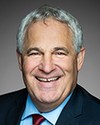There are a number of things. First, there was an in-person consultation in Timmins, which is a three-and-a-half hour drive from my area and six hours from Sault Ste. Marie. The affected riding was Algoma—Kapuskasing, which is even another five to six hours. There's nothing wrong with having the consultation in Timmins, but that wasn't the affected riding, so that was bizarre and we tried to have it changed. There was a virtual option, which is difficult as some areas don't have high-speed Internet. The commission added that at the end because there were so many submissions.
You saw the number of submissions in my package. Nickel Belt received the second-largest number of submissions of any riding in Ontario, but essentially you see that colleges, mayors, organizations, francophones and first nations objected.
Also, to Marilyn's point, in 2012 the commission stayed with the status quo on the 10 seats. Why in 10 years did they change it? It is because they say it's their mandate to have one additional seat in Ontario. That's why the recommendation for something new—for example, in a larger riding that has a population of 140,000 or 150,000—is to add two staff members. You could do that to deal with the population, but you can't split an MP in two.
What was also said here is that in rural areas, there are a large number of—and I'll mention the party—PPC votes in northern Ontario because people are disenfranchised with the political system. If we look at the increase in votes, it was close to 10% in Nickel Belt on the PPC side. Rural areas are being...and it's going to be even worse now because from 10 seats, we're going to nine seats.
To answer that question, as far as the representation itself is concerned, it's a big issue for us moving forward.

